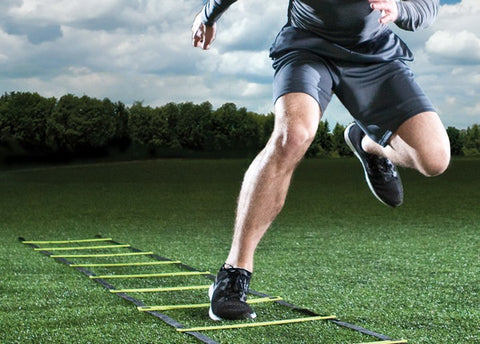 Adequate training is necessary to ensure athletes are prepared for performance in their sport. The type of training and methods used depends on factors such as the type of movement, skill requirements and specific demands of the activity in question.
Adequate training is necessary to ensure athletes are prepared for performance in their sport. The type of training and methods used depends on factors such as the type of movement, skill requirements and specific demands of the activity in question.
Coaches and athletes need to understand there are different types of training specifically designed to develop the fitness components, and each is closely linked to the energy systems and principles of training.
Continuous Training
Continuous training is also commonly used in team sports as a pre-season training method to establish a sound aerobic base from which athletes improve their other fitness components. To gain the most out of continuous training, follow the FITT formula:
- Frequency (at least three or four sessions per week)
- Intensity (in the aerobic training zone 70-85% max HR)
- Time (minimum of 20 minutes continuous activity is required)
- Type (whole-body activities that use large, major muscle groups, such as walking, running, cycling, rowing, swimming)
Fartlek Training meaning "Speed Play"
Fartlek training, a variation of continuous training, involves changes of intensity throughout the training sessions. These changes of intensity can be simply an increase in pace or running up a hill, & involve the addition of the anaerobic glycolysis energy system to help produce the increased amount of ATP needed for the increased intensity. As a result, it stimulates the interplay between the aerobic & anaerobic energy systems used in individual sports & in team games.
Resistance Training

Resistance training aims to build muscle strength, muscle power or local muscular endurance by exercising muscles or muscle groups against a resistance. The fitness component developed depends of the weight in which is lifted (% of 1RM) and the number of repetitions (reps) performed. Resistance can be either a weight or body weight.
Medium Interval Training

Medium Interval Training is where the work period is dominated by the anaerobic glycolysis energy system. This occurs either when the work period is between 10 & 60 seconds or when the work-to-rest ratio is 1:2 or 1:3.
The aim is to develop tolerance of lactic acid. This is particularly important for team sports that regularly require performers to maintain high intensity output in the presence of metabolic by-products.
Speed Training

Running speed is a product of stride length & stride frequency.
Improvements in one of these factors will improve speed, but because they are so closely interrelated, an increase in one often results in a reduction in the other.
Therefore the aim of any specific speed work is to increase achievement in one of these parameters while at least maintaining the other. Short-interval training, together with technique work to improve the efficiency of the task being performed will develop speed. Strength work & plyometrics will also benefit any speed training program.
Plyometric Training
Plyometrics, also known as jump training, is a training technique designed to increase muscular power & explosiveness.
Plyometric training conditions the body with dynamic resistance exercises that rapidly stretch a muscle (eccentric phase) and then rapidly shorten it (concentric phase). Hopping and jumping exercises, for example, subject the quadriceps to a stretch-shortening cycle that can strengthen these muscles, increase vertical jump, and reduce the force of impact on the joints.





